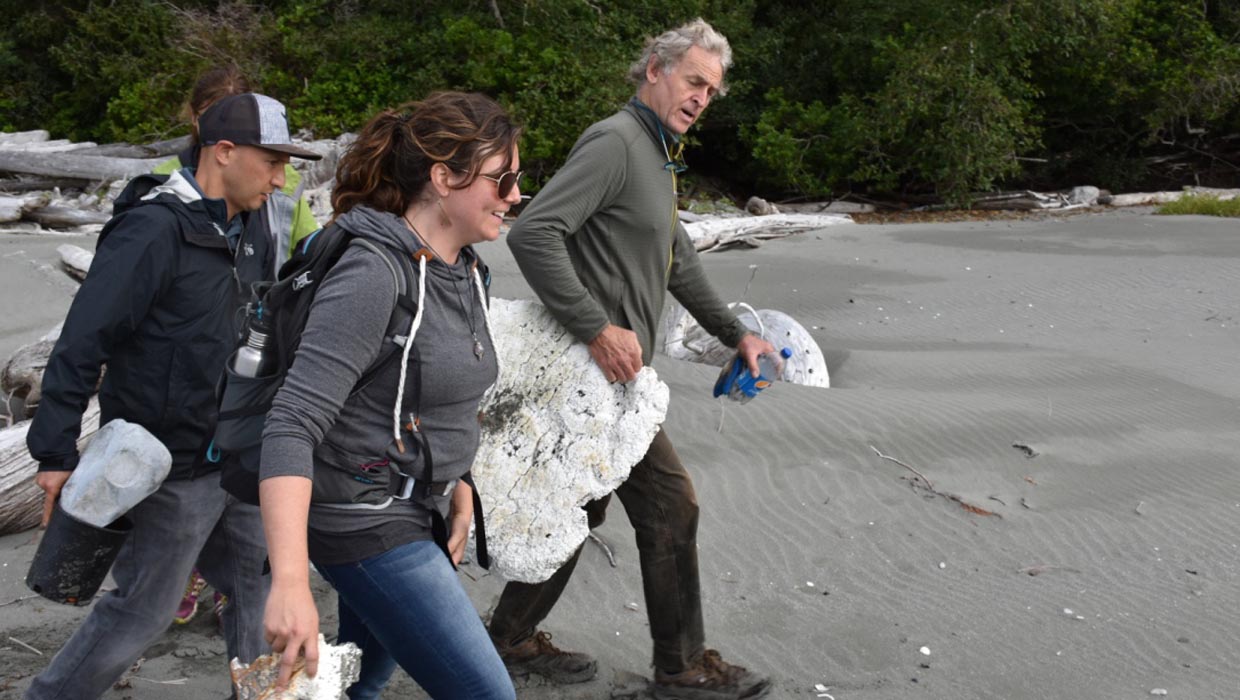On a brisk, beautiful sunny September day, TLC staff took a trip to Tofino to monitor the exquisite Clayoquot Island Preserve. The island has seen many changes, having once been the major town complete with post office and hotel before Tofino’s population grew. Thankfully, for nature lovers, Clayoquot Island (aka Stubbs Island) was bought by Susan Bloom who immediately recognized its value and endeavored to protect it from further development as well as restore it back to its natural beauty. Bloom registered a conservation covenant with TLC on approximately 93 acres of Clayoquot Island in 2007, but the rest of the island is now protected as well – the Nature Conservancy of Canada is the proud new owner of 93 acres of the island, having received it by donation in 2015 from Bloom.
The 93 acres contains mixed old-growth and mature second-growth coastal western hemlock forests, and a significant stretch of oceanfront with sand dunes and eelgrass beds, boasting visits from great blue herons, black oystercatchers and Pacific geoduck, as well as a wolf or two from time to time.
On TLC’s recent monitoring visit, a wolf was indeed on the island but fortunately (or unfortunately, depending on your love of wolves!) none were seen. However, their presence was known due to the scat found on the island’s boardwalks! TLC staff were joined by the long-time island caretaker who has painstakingly watched over the island for over 30 years. Chris has seen it all on this island – entire patches of forest grow where none were before; befriended wolves and other creatures like the adorable squirrel who stole walnuts and hazelnuts from our tea tray while in Chris’s home; watched sunflowers plant themselves on random beaches across the island, ever hopeful to make a go of it; laboriously constructing and reconstructing the boardwalks that allow access to much of the island, and so much more. All while simultaneously gathering seaweeds and herbs to create beautiful soaps, right in their backyard!
The real magic of Clayoquot Island is being there, which is why Chris’s stories and experiences over the past 30+ years are so riveting. Where else can time essentially stand still, or even go backwards? Removing tonnes of waste materials from the island is no small feat, and allowing natural processes to thrive while simultaneously cultivating a garden straight out of Anne of Green Gables is nothing to sniff at either. TLC can’t thank Chris and Sharon enough for their lifetime of stewardship over this very special place.
The monitoring visit enchanted us with forests dripping in moss, beaches with an incredible diversity of seaweeds, caves with rare crickets inside, and trees so large you can’t possibly get a good picture of them. As the island is on the west coast, it unfortunately sees a fair amount of garbage drift in, but this is carefully picked up every day when Chris does his rounds. In fact, one piece of “garbage” Chris found is the boat he uses most often, lovingly nicknamed “Deathtrap” on account of the salvager wondering why Chris wanted such a deathtrap of a boat. With a very shallow base, Deathtrap allows its captain the ability to get far into shore without scraping too much on the bottom. There is a purpose for everything, even the garbage of Clayoquot Island.
TLC gratefully looks toward our next monitoring visit on Clayoquot Island and are very proud to continue to help protect this ecologically and culturally significant island.
Those who would like to visit this gem of an island can do so on the May long weekend; the only time the island is open to the public.









